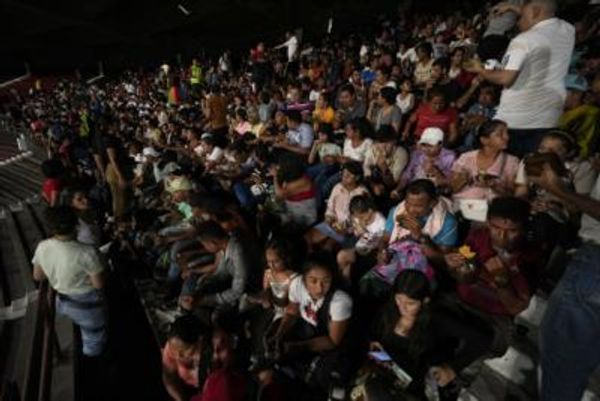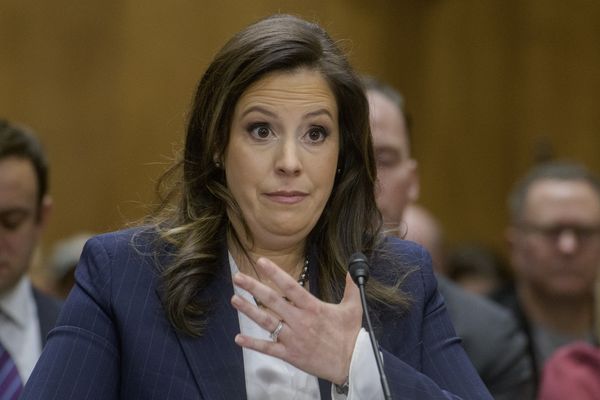
Dai Le’s campaign for the Western Sydney seat of Fowler “ran on the smell of an oily rag” — a stark contrast to the well-funded campaigns of other independents this election, or the national grassroots infrastructure the Greens have developed over two decades.
People assumed Fowler would be a contest between an experienced campaigner and a relative amateur. They were right: Kristina Keneally has never won a competitive campaign before.
In 2003, intervention by Labor’s head office ensured Keneally would win her first preselection battle in the NSW state seat of Heffron — a seat safely in Labor hands for 30 years. When the aggrieved former member for Heffron, Deirdre Grusovin, complained the process had been undemocratic, Keneally told the Sydney Morning Herald:
“I don’t care if people think I’m a puppet put in by head office, because I know that’s not true. I’ll be judged by my work.”
After a rapid rise through the Labor-right ranks and a brief stint as a popular premier, Keneally led the NSW Labor Party to a historic defeat from which they are still recovering. She resigned from state Parliament the following year.
Accusations of being a “parachute candidate” dogged her bruising loss against John Alexander in the 2017 Bennelong byelection. This was perhaps a little unfair, given she lived only 800m outside the electorate.
In 2018 Keneally received a second shot at federal politics when she was appointed to fill the casual vacancy caused by the resignation of Sam Dastyari, and was able to retain her safe spot on the Labor Senate ticket the following election.
This may be why Dai Le volunteers told me they saw Keneally making “rookie mistakes” campaigning, like standing in the sun too long and exhausting herself at pre-polls.
In contrast, Le’s local campaign machinery has been running virtually non-stop since 2016. Her election to federal Parliament ran as an extension of the local independent uprising led by her and Fairfield Mayor Frank Carbone.
On the face of it, Le and Carbone are an odd political pairing, but they share a distaste for party politics. Le was expelled from the Liberal Party for running as an independent in the Fairfield local council elections. The same year, Carbone decided to jump rather than be pushed out of the Labor Party, when an “unholy alliance” led by Labor-right powerbroker Joe Tripodi sought to unseat him as mayor.
It backfired. Le and Carbone ran what amounted to a joint independent mayoral campaign, and Carbone was returned as an independent mayor in 2016 with Le as his deputy, securing a 14.1% swing against Labor and adding two more independents to the council.
The 2021 Fairfield local government elections were a bloodbath for the major parties. Carbone, Le and their allied independent council candidates received a 52.4% swing against the major parties, and Carbone was returned as Fairfield mayor with 73.5% of the primary vote. After the dust had settled, independents controlled 10 of the 13 seats on the Fairfield council.
In September that same year, Keneally, herself a former factional ally of Tripodi, announced her candidacy for Fowler.
Almost immediately murmurs began in the community about whether Le or Carbone would challenge her as an independent, or whether they would run a “dual independent” ticket similar to the last two mayoral races. Ultimately, the decision was made that Le would run, and Carbone would remain mayor.
While Le concedes she “may have run anyway”, Keneally’s candidacy provided the rocket fuel that propelled her to victory.
Keneally was always likely to struggle with grassroots support in the community given the controversy around her preselection over the locally preferred candidate, Tu Le. This may be why she was not seen much around Fowler until the pre-polls began.
When she began campaigning in earnest at pre-polls, she must have sensed danger. Her campaign rapidly turned negative, with corflutes and signs appearing that featured Scott Morrison and Dai Le standing next to each other with the text “Dai Le and Scott Morrison: Don’t risk a Liberal government”.
The AEC found the signs were misleading and ordered them removed, but they were still visible in some parts of Cabramatta on election day. Although Le’s campaign also used negative signage, it was more cheeky than offensively wrong: a map showing the distance between Fairfield and Scotland Island; reminders of Keneally’s former association with Tripodi and retired politician and convicted criminal Eddie Obeid.
“When the history of this campaign is written, it’s going to go down as one of the dirtiest campaigns in history,” said Mayor Carbone.
On election day, morale appeared comparatively low among Labor volunteers. Most did not really want to talk about Keneally, and always steered our conversations back towards the necessity of removing Morrison.
At Yennora Public School, a polling station on the border of Fowler and McMahon, a Labor volunteer named Tony told me he was pulling a second shift handing out for Keneally after earlier handing out for Chris Bowen.
Tony said he was “hopeful” of a Keneally victory.
“Look, it’s always hard to tell when someone moves into an electorate, but I think she’s in with a very good chance … she’s an experienced candidate, and I’m expecting her to win,” Tony said.
“It’s been busy most of the day, and we’ve been getting great feedback.”
This was one of few booths Keneally would win by night’s end.
Le’s volunteers were largely reluctant to speak to me. Some were industriously focusing on making sure they talked to every single voter. Some didn’t feel comfortable speaking in English. Others were concerned I would “twist their words”.
The unstated fear was clear enough. The people of Western Sydney felt decisions about lockdowns were made for political, rather than public health, reasons. They felt ignored or vilified by the media, and didn’t trust me — nor anyone else not from their community — to tell their stories without turning them into parochial caricatures.
At Le’s election night party, the reception could not have been more different. A celebratory atmosphere dominated from the moment the polls closed, and the consensus believed it would be tight. People wanted to talk, though some more than others.
“Alright, leave my wife alone, I’ll do your interview,” Carbone laughs at me when I accost her with a microphone.
“If we get Dai in, and Morrison out, that’s a double-barrel,” Carbone says. “If we win, it’s because what we do, we do with our hearts, for this community.”
Early in the campaign, Le told me she’d be happy to get more than 20% of the primary vote — enough to give Labor pause. That was not to be. As her predicted primary continued to rise towards 30%, her face appeared more on the screen projecting election results over the house band. The chants of “Dai Le, Dai Le, Dai Le” became louder and more frenzied, while the band played a catalogue of ’80s and ’90s hits.
Le’s husband, Markus Lambert, flicked through channels looking for news about Fowler. Carbone regularly grabbed the microphone and stopped the band to excitedly yell out booth results to the energised crowd, who couldn’t have cared less. They had flipped the narrative on one of Labor’s most significant political head-kickers. Why wouldn’t they celebrate? They’d already won.
For someone who had “barely slept in weeks”, Le managed to party with the best of them, performing the political move of joining her constituents on the dance floor and avoiding looking like a slow-motion Peter Garrett.
Le was elected with 51.6% of the two-candidate-preferred vote — a near mirror for the 52.4% swing Le and allied independents received in the 2021 Fairfield local government elections.
At the moment it became clear she would win, I asked Le how she was feeling.
“Honestly … I still haven’t processed it. I’ve been two weeks standing at pre-poll from 8 in the morning to 8:30 at night, every day, so that’s what I’ve been focused on,” she said.
Still saying if she was elected long after Antony Green had called the seat in her favour, Le indicated a preference for collaborative politics and a desire to work with both major parties and the crossbench.
“I’m a people person. I’m about collaboration, first and foremost. So I’m all about looking for a win-win for everybody … the pie is big enough that we can split it up, and share it across Australia.”
In a recent interview with Peter FitzSimons, Kristina Keneally scolds her would-have-been constituents:
“Harsh lockdowns engendered a sense of parochialism … I genuinely believe that whether the Labor Party ran me or anyone else in Fowler, they would have encountered the same set of challenges.”
The Labor-right faction has treated Fowler voters like parochials; they embraced the label by spending the last decade throwing the party out on its ears. Given her record, why did anyone think Keneally would be any different?







